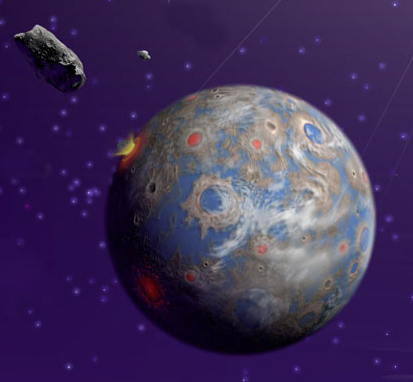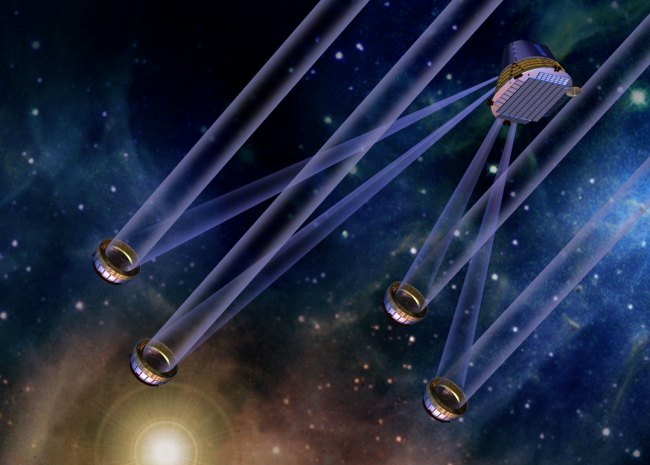First Potentially Habitable Exoplanet Found! So What's the Big Deal?
by Ann Finkbeiner

Read enough astronomy press releases, and you’ll know that “habitable” is better than “earth-like,” which means a certain distance from a star, which is better than “earth-sized,” which could mean Venus which looks like pizza right out of the oven. So “Potentially Habitable,” this is good. The planet’s name is Gliese 581g, it’s around three earths, it’s probably not made of gas, it could conceivably hold on to an atmosphere, and it’s at the right distance from its star, Gliese 581, to have liquid water on the surface. Gliese 581g for some physics reason always faces Gliese 581, so half of it may or may not be always a 70°C degree daytime and the other half, a -35°C degree night (I’m not converting these to Farenheit, life is already short).
This means, said an optimistic astronomer at the NASA press conference, you could evolve for light and heat or dark and cold, take your pick, all niches filled. Astronomers say Gliese 581g is in the Goldilocks zone, and from that sentence alone you can divide astronomers into geeks and poets.
Exoplanets are scientifically hot these days. Around 30 years ago, astronomers didn’t see the point to them-what new do you learn about the universe? Not much-and any astronomer who looked for them pretended he didn’t. But technologies have gotten much more stable and sensitive, and at last count, astronomers had found 490 exoplanets. Most of the exoplanets are Jupiters, few have been in the Goldilocks zone, all the earth-sized ones are much bigger than Earth, and nobody knows yet what they’re made of or whether they have atmospheres that can protect life, let alone whether anyone could or would live there. So astronomers in universities and at NASA are using satellites and telescopes on the ground, and everyone has high hopes and great plans-the most breath-taking being Terrestrial Planet Finder Interferometer in space, you don’t even need to know what it does, all you have to do to get your breath taken is look at it.

I’m still not entirely sure why astronomers are looking for these things. Nevertheless, the exoplanet hunt isn’t all NASA-hype or astronomers-wangling-cash-from-Congress, because the normally-impassive National Academies of Science said it had the potential for making “the most profound discovery in the coming decade,” and even better, “one day, parents and children could gaze at the sky and know that a place somewhat like home exists around ‘THAT’ star.” And a usually-skeptical astronomer-blogger said that given the number of stars in the galaxies and the discovery of a relatively nearby planet “practically in our lap” makes him “extremely optimistic that earthlike planets are everywhere in our galaxy.”
Then he added, “I don’t want to extrapolate from a data set of two (us and them),” which he went on to do and you might want to ponder the statistical certainty of that. But I’m back 30 years ago, not quite seeing what new this says about the universe, I mean, we know planets support life, right? I’m more interested in the dark sector.
Ann Finkbeiner is a proprietor of The Last Word on Nothing, and is newly the author of A Grand and Bold Thing: An Extraordinary New Map of the Universe Ushering In A New Era of Discovery. She runs the graduate program in science writing at Johns Hopkins in The Writing Seminars.
